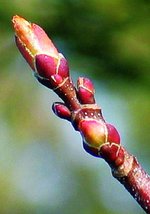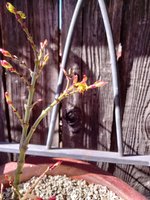Spring arrives March 20th, but the trees don't know that. Instead, they will be responding to the weather, not the calendar. I assume those in warmer zones may have already begun spring work, whereas here in the south shore of NY the snow is still melting and the ground beginning to thaw. I am observing my maples every day to witness any changes in the buds that would give me the green light to start spring work, although assume I am still a few weeks away (extended weather forecast is good, but some more frosts likely here, especially at night).
Given the importance of doing bonsai work at the right time, I thought I'd start a thread on how to recognize when one's maple is ready for spring work. Specifically, what is bud "swelling" and "elongation"? Any pics folks may have on what "swelling" buds and "elongating" buds actually look like on maples would be great. Also, any pics of trees whose buds have passed the point of spring work requiring the bonsai artist to wait for summer to do work. Other than a change in size of the bud, what are the other tell-tale signs?
I'll start this off with what I believe is a dormant Acer Rubrum bud, followed by what it looks like "swelling".
Given the importance of doing bonsai work at the right time, I thought I'd start a thread on how to recognize when one's maple is ready for spring work. Specifically, what is bud "swelling" and "elongation"? Any pics folks may have on what "swelling" buds and "elongating" buds actually look like on maples would be great. Also, any pics of trees whose buds have passed the point of spring work requiring the bonsai artist to wait for summer to do work. Other than a change in size of the bud, what are the other tell-tale signs?
I'll start this off with what I believe is a dormant Acer Rubrum bud, followed by what it looks like "swelling".




